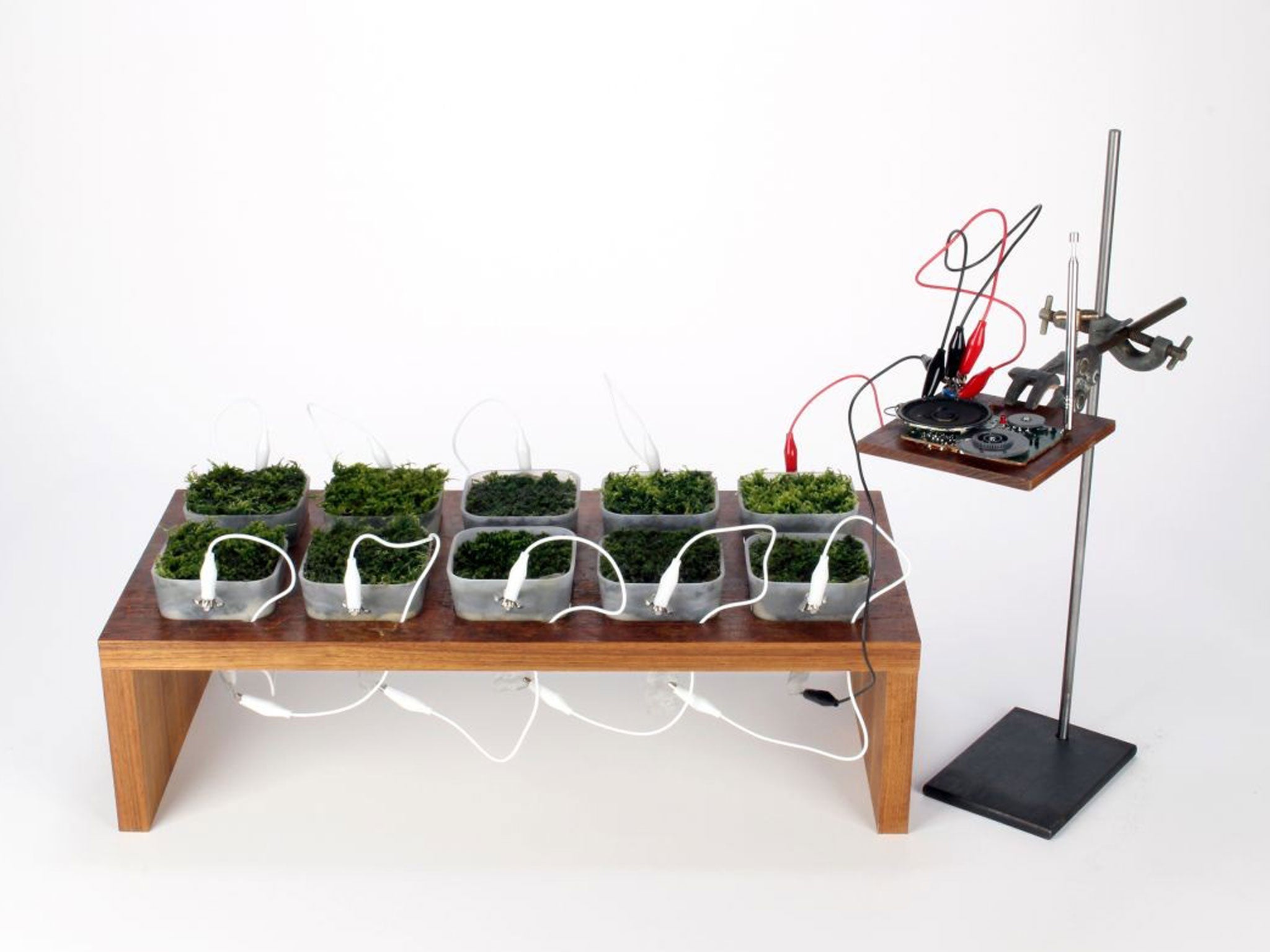Tune in to Moss FM: Swiss designer uses the prolific plant to power a radio

Stand by for the ultimate gardening programme. A Swiss designer has teamed up with scientists at the University of Cambridge to use one of Britain's most prolific plants – moss – to power a radio. The device, nicknamed Moss FM, effectively turns moss into biological solar panels by tapping into the surplus electrons that moss creates during photosynthesis.
It's still early days: the radio only runs for a few minutes at a time. But designer Fabienne Felder hopes this is just the start of a journey, comparing it to the beginning phases of solar energy research.
"Extremely low-powered LCD screens had previously been powered by plants. I wanted to power something bigger, but I couldn't choose anything extreme, like a computer. I settled for a radio. Also because instead of the usual visual effect, you would actually get an aural effect, which I thought went nicely with plants," she said.
Felder admits that to get your morning Radio 4 fix would take about 10sq m of moss. But if you consider that, so far, the scientists – Paolo Bombelli, a biochemist, and Ross Denni, a plant expert – have only harnessed about 0.1 per cent of the energy created by moss, then there is room for progress.
This isn't the first time that moss has had a starring role beyond the cracks in the pavement or the forest floor: it was used to dress wounds during the First World War.
The team wanted to create an electricity-generating mosscoating on, for example, an aircraft cabin, but budgets forced it to refine the vision. Ms Felder is on a mission to promote moss: "People scrape it off their roofs, thinking it's some kind of weed. But mosses actually preserve the surface they grow on. They also work as insulators and muffle noise. Throughout history they have been used for anything from medicine and preservation, due to their anti-fungal and anti-bacterial properties, to stuffing furniture, building, or even pottery. In Japan, they are revered as a symbol for long life."
There are more than 20,000 species of moss in Britain but Ms Felder said the team was anxious that do-it-yourself enthusiasts didn't start digging. "We certainly don't want people to go out now and destroy ecosystems by collecting a lot of moss from the woods," she said.
She is part of a nascent movement called biophilic design, which takes inspiration from the living world, "drawing principles and processes from nature, in a responsible way".
Next could be floating algae farms acting as generators. "Maybe certain types of farmland could double up as generators, such as rice paddies," Ms Felder said. "The technology could have a bigger impact in countries where power consumption isn't so high yet." But first the team needs funds to "build something big, and to learn by trial and error".
Subscribe to Independent Premium to bookmark this article
Want to bookmark your favourite articles and stories to read or reference later? Start your Independent Premium subscription today.

Join our commenting forum
Join thought-provoking conversations, follow other Independent readers and see their replies